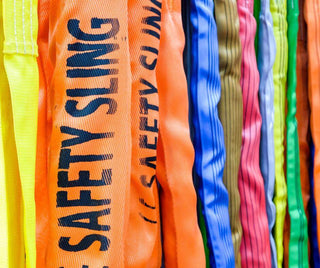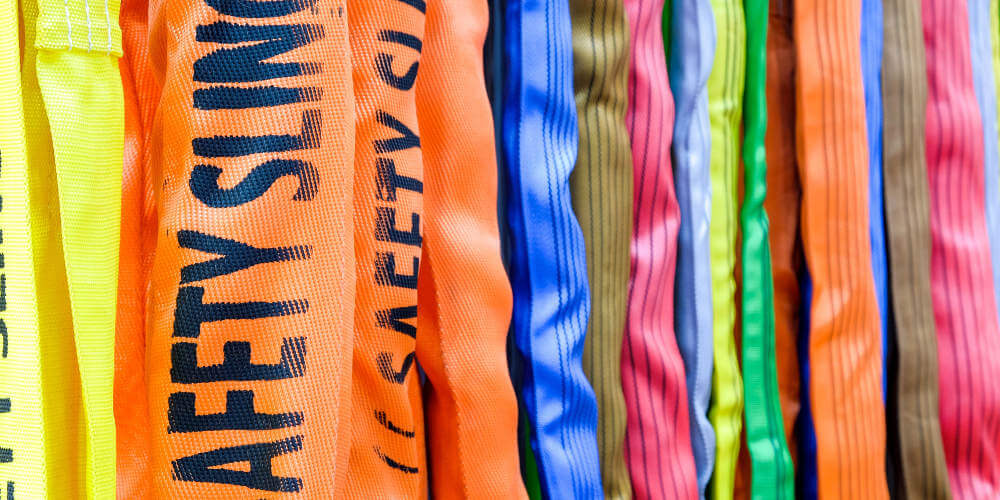- Make sure Tag is not missing and is always readable - OSHA requirement.
- Inspect before usage.
- To prevent damaging the sling you should avoid contact with protrusions during lifting, storing, or transport.
- Make sure there are no broken stitching, knots, abrasions, color fading, or cuts. If there are the sling must not be used and taken out of service.
- Red core yarn comes in each sling. It’s an additional aid to warn of sling damage. The red thread becomes exposed when the sling is worn or cut.
- Wipe down & store slings in dry cool place for longer life service.
All Lifting Slings come with label that includes size, type, and capacity information. We also supply other lifting products such as
Nylon or Polyester Web Slings, Synthetic Rope Slings, Recovery Slings, and Chain Slings.
Lifting accessories such Synthetic Sling Hardware and Shackles
For product availability and information follow this link:
https://www.baremotion.com/collections/polyester-round-slings
For custom made lengths please email us for a quote: Sales@baremotion.com
All gear should be thoroughly inspected before each and every use. Worn or unsafe rigging and safety gear should never be used. Inspect chain slings regularly and to keep a record of all chain inspections. Products should be used in strict accordance with all industry and OSHA standards.


